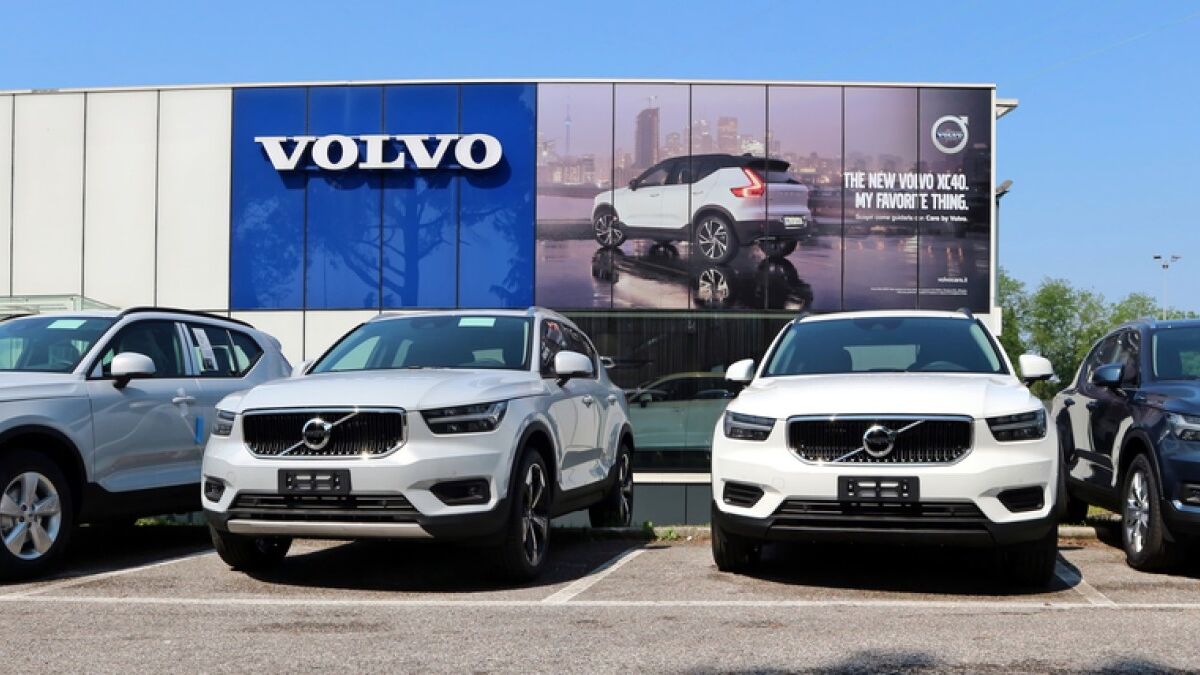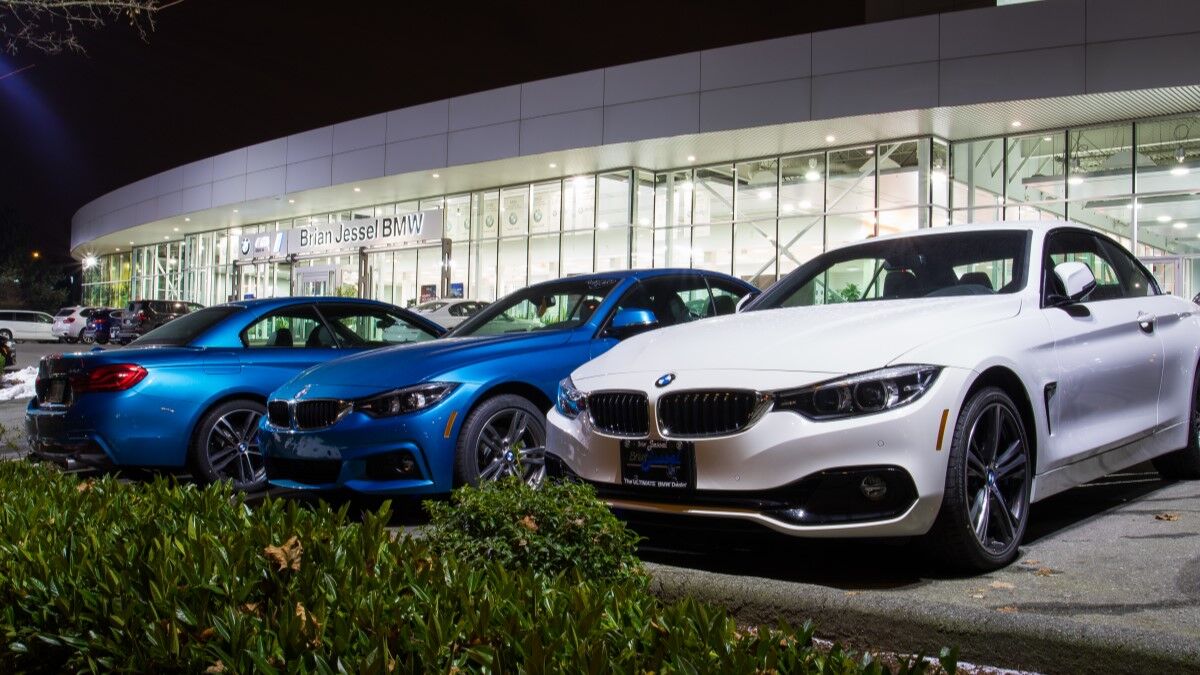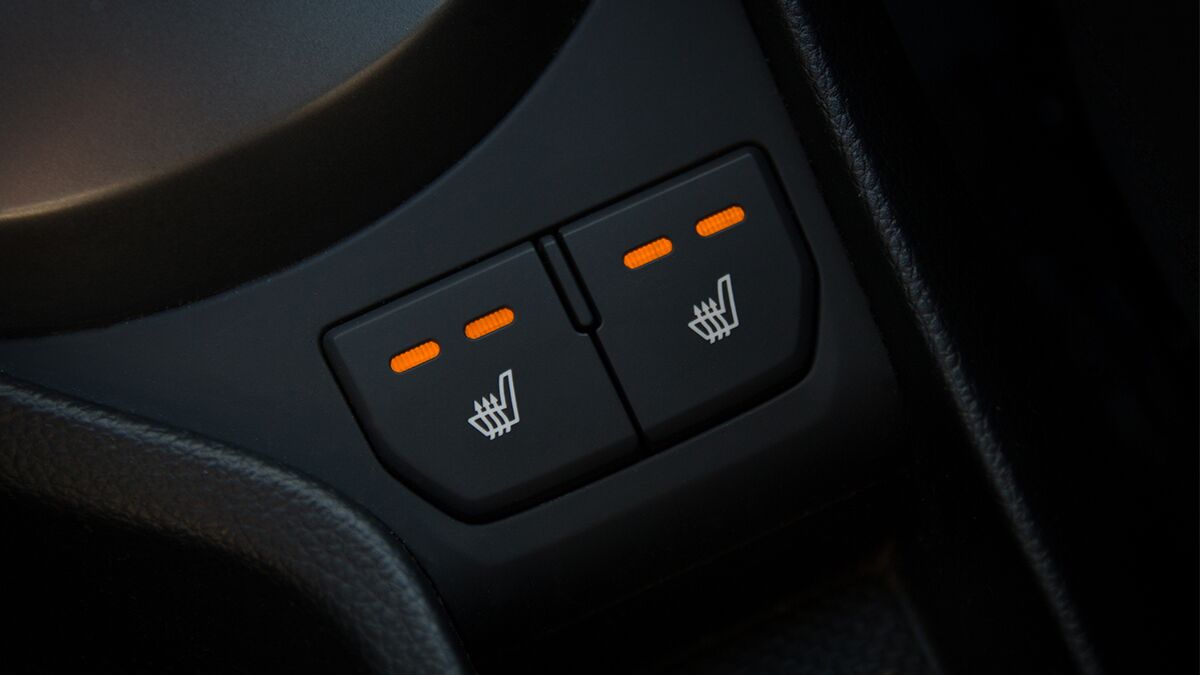
Families mean kids, and kids invariably mean car seats. Every state has car seat laws on the books, and federal guidelines on car seats suggest leaving your kids in car seats for as long as possible, and keeping them in the back seat until they’re 12 years old.
The good news is that pretty much every vehicle with a rear seat comes with accommodations for installing a car seat securely. The downside is that not all rear seats are created equally when it comes to actually getting a child booster or infant seat properly situated. As part of our Family Car evaluations, we installed three different child safety seats in each of our vehicles to determine a variety of different things, such as ease of removal and installation; access to upper and lower anchors; and front seat legroom when a car seat is installed.
While individual vehicles varied widely, even within their own categories, we did note some general conclusions. For example, full size sedans don’t have a distinct advantage over many midsize sedans, with the possible exception of between-car-seats room. Bigger isn’t always better, at least as far as exterior dimensions are concerned. And, not so surprisingly, nothing beats a minivan for ease of use when it comes to child car seats.
General Guidelines
If you’re shopping for a car and plan on using a car seat with it, be sure to bring the actual child seat with you to the dealership. While you’re there, install the car seat, and make sure you have enough room to cinch the seat down properly, and that the car seat can be secured according to the manufacturer’s guidelines. Also, be sure you can sit comfortably in the front seats with a booster or rear-facing baby seat behind you. Other tips include:
- Check your local state laws for guidance on how long your kids need to be in car seats, and what type is recommended. A useful list can be found on the Insurance Institute for Highway Safety’s website.
- Make sure you know how to properly adjust the straps and belts for your child. If you’re not sure, check the owner’s manual, or contact your local highway patrol or state police office for a demonstration on how to strap in your child properly.
- Never strap in your child while he or she is wearing a heavy coat. Remove the coat, strap in your child, then put the coat or blanket on top. Coats can reduce the effectiveness of the belts, allowing a child to slide out from the belts in an accident.
- Remember that federal guidelines recommend keeping your kids in the back seat until they are 12 years old.
Here’s a high-level look at how each of our 16 Best Family cars of 2016 performed during our thorough car-seat evaluations:
Sedans
Honda Civic The small rear door opening made it a little difficult to get the seat in the car, but the LATCH points were easy to reach once it was in. Front seat room with a rear-facing car seat is only so-so for tall passengers.
Chevy Malibu Slits in the upholstery made it easy to attach the lower anchors, and the upper tether was easy to reach. The Malibu was one of the best for front seat legroom with a rear-facing infant seat installed.
Hyundai Sonata The Sonata’s lower anchors were easy to use, and the upper tether was easy to reach thanks to an adjustable head restraint. There’s plenty of legroom for tall passengers in the front seat when an infant seat is installed.
Kia Optima Not surprisingly, the Optima is similar to the Kia Sonata, with the easy-to-reach lower anchors hidden behind spring-loaded doors. It also offers very good legroom, although not quite as good as the Sonata or Malibu.
Honda Accord The lower anchors were buried between stiff cushions, but the adjustable head restraint made the upper tether the easiest to reach of any sedan. There’s decent room in the front seat with infant seat installed behind.
Chevy Impala The Impala’s strongest suit is that it can fit an adult between two mounted car seats, and front seat room is pretty good. Still, the anchors are hard to reach, and the low roof makes installing the seats more difficult than some of the other sedans.
2-Row SUVs
Honda HR-V The little HR-V surprised us with good space in the second row for car seats, although with a rear-facing infant seat legroom gets tight in front, making the HR-V better suited for forward-facing convertible car seats or boosters. The HR-V had slots in the seat upholstery, making it easier to hook the lower anchors, and the headrests moved out of the way for the tether.
Honda CR-V The lower anchors are easy to access through a slit in the upholstery, and the upper is also easy thanks to the elevated head restraint. Front seat room with an infant seat installed was tight but acceptable.
Subaru Outback The lower anchors were hidden behind a flap of upholstery, and the upper tether was equally easy to access. There’s decent front legroom with an infant seat installed, and an extra person can squeeze between two car seats in back, although it’s a tight fit.
3-Row SUVs
Nissan Pathfinder The Pathfinder’s second row passenger-side seat can still slide forward when a car seat is installed. The second-row lower anchors were hard to reach, and there were no lower anchors in the third row, although the right side had a tether. Front passengers had good legroom with an infant seat installed.
Toyota Highlander Smaller than the Pilot and Pathfinder, the Highlander’s front-seat room with an infant seat behind wasn’t as good as either. Still, the anchors were easy to reach, and installation in all rows was straightforward, although the third row offers no lower anchors.
Honda Pilot When the middle row was in its rearmost position, the Pilot boasted the best front-seat legroom of any SUV with an infant seat in the second row. The Pilot was also wide enough to accommodate three car seats in the second row if you stagger the seats. Anchors in the second and third row were easy to find and use.
Chevy Tahoe The middle row accommodated three car seats, but the upper anchors were very difficult to reach because of the stiff headrest cushion. The rear row accepts two car seats, but you’ll have to use the seatbelt since there are no lower anchors. Front-seat legroom wasn’t any better than many smaller vehicles.
Minivans
Kia Sedona Although smaller than the Odyssey and Sienna, the Sedona still swallowed car seats with little fuss. There were two LATCH positions in front, with a third in the rear, all were easy to access, and there was good room in front for a passenger.
Toyota Sienna The Sienna’s long-slide seats make it easy to install LATCH equipped boosters, and they give the front passenger the best legroom of any vehicle in the test, as long as nobody sits in the third row. The anchors were easy to reach.
Honda Odyssey The Odyssey is the car seat champion, and was the only vehicle here that could accommodate five car seats at the same time, all using LATCH points. Three across in the middle is easy thanks to the Wide Mode seats, and there was good front legroom with an infant seat in the second row.
Popular at KBB.com







